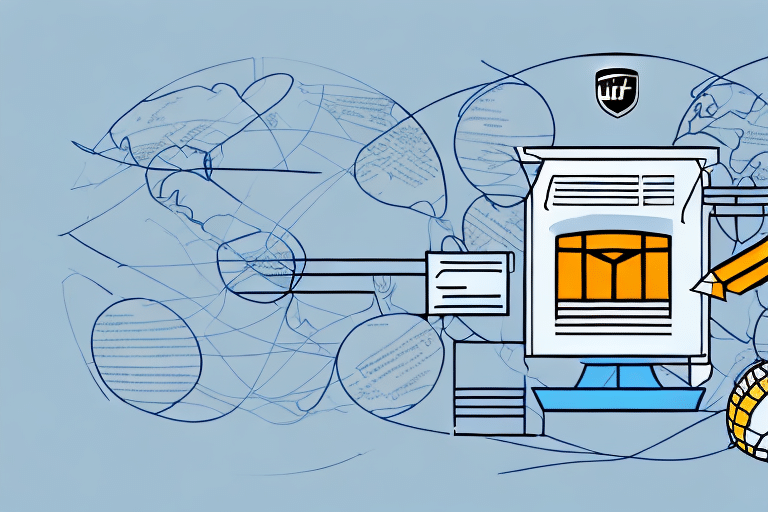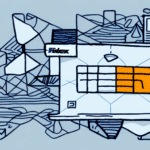How to Set Up Product Customization Tools for Your Business
In today's competitive market, customers demand personalized experiences when purchasing products. To meet these evolving expectations, offering customizable products that align with individual preferences is essential. Product customization tools enable businesses to provide such personalized experiences, enhancing customer satisfaction and loyalty. This guide explores the importance, benefits, and key considerations for implementing product customization tools in your business.
Understanding the Importance of Product Customization
In an era dominated by mass production, customers have an abundance of choices. They seek personalized products that reflect their unique tastes and preferences, making them feel valued and involved in the purchasing process. Product customization allows businesses to cater to these individual needs, fostering a sense of ownership and connection with the product.
Research indicates that customers are willing to pay a premium for customized products. According to a Forbes study, personalized products not only boost customer satisfaction but also significantly increase profitability.
Additionally, product customization provides valuable insights into customer preferences. By analyzing customization choices, businesses can refine their product offerings and tailor their marketing strategies to better target their audience, ultimately driving sales and fostering customer loyalty.
Benefits of Implementing Customization Tools
Enhanced Customer Experience
Customization tools empower customers to design products that meet their specific needs, creating a more engaging and interactive shopping experience. This involvement fosters a deeper connection between the customer and the brand.
Increased Profitability
Offering personalized products often allows businesses to charge higher prices, thereby increasing profit margins. Customized products also tend to have lower return rates as customers are more satisfied with their purchases.
Valuable Customer Insights
Customization options generate data on customer preferences and behaviors. This information can be leveraged to improve product development, optimize inventory, and create targeted marketing campaigns.
Competitive Differentiation
By providing unique and personalized products, businesses can distinguish themselves from competitors, attracting customers who seek tailored solutions that are not available elsewhere.
Factors to Consider Before Implementing Customization Tools
Customer Needs and Preferences
Understanding your target audience is crucial. Conduct market research to identify which customization options your customers value most and tailor your tools accordingly.
User-Friendly Interface
The customization tool should be intuitive and easy to navigate, ensuring that customers of all technical skill levels can use it without frustration.
Integration and Scalability
Ensure that the customization tool seamlessly integrates with your existing systems, such as your e-commerce platform and inventory management. Additionally, the tool should be scalable to accommodate business growth and increasing customization demands.
Cost and Return on Investment
Evaluate the initial and ongoing costs of implementing customization tools against the expected benefits. Consider factors such as increased sales, customer retention, and operational efficiencies.
Support and Maintenance
Choose a customization tool provider that offers robust customer support and regular updates to address any issues promptly and keep the tool running smoothly.
Types of Product Customization Tools
Product Configurators
Product configurators allow customers to select and modify various features of a product, such as color, size, materials, and accessories. They are ideal for complex products like electronics, vehicles, and furniture.
3D Modeling Software
For products like jewelry and apparel, 3D modeling software enables customers to visualize and tailor designs in a three-dimensional space, offering a more immersive customization experience.
Online Customization Platforms
These platforms provide a comprehensive solution by handling the entire customization process, from design to production and shipping. They are particularly useful for small businesses looking to offer customization without significant upfront investment.
Choosing the Right Customization Tool for Your Business
Assessing Business Needs
Identify the specific customization requirements of your business and choose a tool that aligns with these needs, considering factors like product type, customization complexity, and budget.
Evaluating Features
Look for features such as real-time previews, mobile compatibility, easy integration with existing systems, and the ability to handle high volumes of customization requests.
Vendor Support and Reliability
Select a vendor with a proven track record of reliability and excellent customer support. Comprehensive training and responsive assistance are essential for smooth implementation and operation.
Customization Flexibility
Ensure the tool offers the level of customization flexibility required by your customers, whether it's basic options or more advanced, detailed personalization features.
Setting Up the Product Customization Tool: A Step-by-Step Guide
- **Select the Appropriate Tool**: Research and choose a customization tool that fits your business needs and budget.
- **Install and Integrate**: Implement the tool on your website and ensure it integrates seamlessly with your existing systems.
- **Configure Settings**: Customize the tool settings based on your product offerings and customer preferences.
- **Create Customization Templates**: Develop product templates that customers can modify, ensuring they are user-friendly and visually appealing.
- **Design the User Interface**: Optimize the interface for ease of use, conducting usability tests to ensure a smooth customer experience.
- **Launch and Monitor**: Deploy the tool and continuously monitor its performance, making adjustments as needed based on customer feedback and behavior analytics.
Regularly update your customization templates to reflect current trends and customer preferences. Providing a real-time preview of the customized product can enhance satisfaction and reduce return rates.
Essential Features of Effective Customization Tools
- **Intuitive User Interface**: Ensure the tool is easy to navigate and use, minimizing the learning curve for customers.
- **Diverse Customization Options**: Offer a wide range of customization features such as color, size, design, and materials.
- **Real-Time Previews**: Allow customers to see their customizations in real-time, enhancing their confidence in their selections.
- **Multi-Device Compatibility**: Ensure the tool functions seamlessly across various devices and platforms, including desktops, tablets, and smartphones.
- **Efficient Order Processing**: Integrate robust order processing and tracking systems to manage customized orders effectively.
Additional features like the ability to save and share designs and personalized product recommendations based on previous interactions can further enhance the customer experience and drive repeat business.
Testing and Troubleshooting Your Customization Tool
After setting up your customization tool, rigorous testing is essential to ensure functionality and user-friendliness. Utilize customer feedback and performance metrics such as conversion rates and usability to assess the tool's effectiveness.
Implement A/B testing by comparing different versions of the tool to identify which performs better and make informed improvements. Additionally, ensure compatibility across various devices and browsers to provide a consistent experience for all users.
Address any technical issues promptly, such as page loading speeds, bugs, or processing errors, to prevent customer frustration and abandonment.
Best Practices for Maximizing the Effectiveness of Customization Tools
- Offer Variety: Provide a comprehensive range of customization options to cater to diverse customer preferences.
- Regular Updates: Continuously update the tool settings and customization templates to stay current with market trends and customer feedback.
- Clear Navigation: Organize the customization tool into easily navigable sections to enhance user experience.
- Live Previews: Enable customers to preview their customizations in real-time, boosting confidence in their purchases.
- Interactive Elements: Incorporate interactive and incentivized features to engage customers and encourage extensive use of the tool.
Analyzing the Impact of Product Customization on Business Growth
Implementing product customization tools can significantly drive business growth by increasing profit margins, enhancing customer loyalty, and differentiating your brand from competitors. Regularly analyze key performance indicators such as customer feedback, conversion rates, and revenue growth to assess the impact of customization tools.
Utilize data-driven insights to refine your customization offerings and marketing strategies, ensuring that they align with customer preferences and market trends.
Case Studies: Successful Implementations of Product Customization Tools
Numerous businesses have leveraged product customization tools to achieve remarkable success:
- Nike's Nike By You: This program allows customers to design their own shoes, selecting colors, materials, and personalized text, resulting in increased customer engagement and sales.
- Dell's Laptop Customization: Dell offers a comprehensive customization tool where customers can configure their laptops' specifications, leading to higher customer satisfaction and reduced return rates.
- Levi's Tailor Shop: Levi's provides an online customization platform for their jeans, enabling customers to choose styles, colors, and add personal embroidery, enhancing brand loyalty.
These case studies demonstrate the effectiveness of product customization tools in enhancing customer experience and driving business growth.
Future Trends in Product Customization Tools
- **AR/VR Integration:** Augmented and virtual reality technologies will offer more immersive customization experiences, allowing customers to visualize products in real-world settings.
- **AI and Machine Learning:** Enhanced personalization through AI-driven recommendations and predictive customization based on customer behavior and preferences.
- **Smarter Interfaces:** Advanced interfaces that intuitively understand and anticipate customer needs, providing seamless and efficient customization options.
- **Real-Time Collaboration:** Tools that enable collaborative customization, allowing multiple users to design products together in real-time.
Staying abreast of these trends will ensure that your customization tools remain innovative and continue to meet the evolving needs of your customers.
In conclusion, integrating product customization tools into your business strategy can significantly enhance customer experience, boost profitability, and foster long-term loyalty. By carefully selecting the right tools, implementing best practices, and staying updated with emerging trends, you can leverage customization to drive sustained business growth.






















